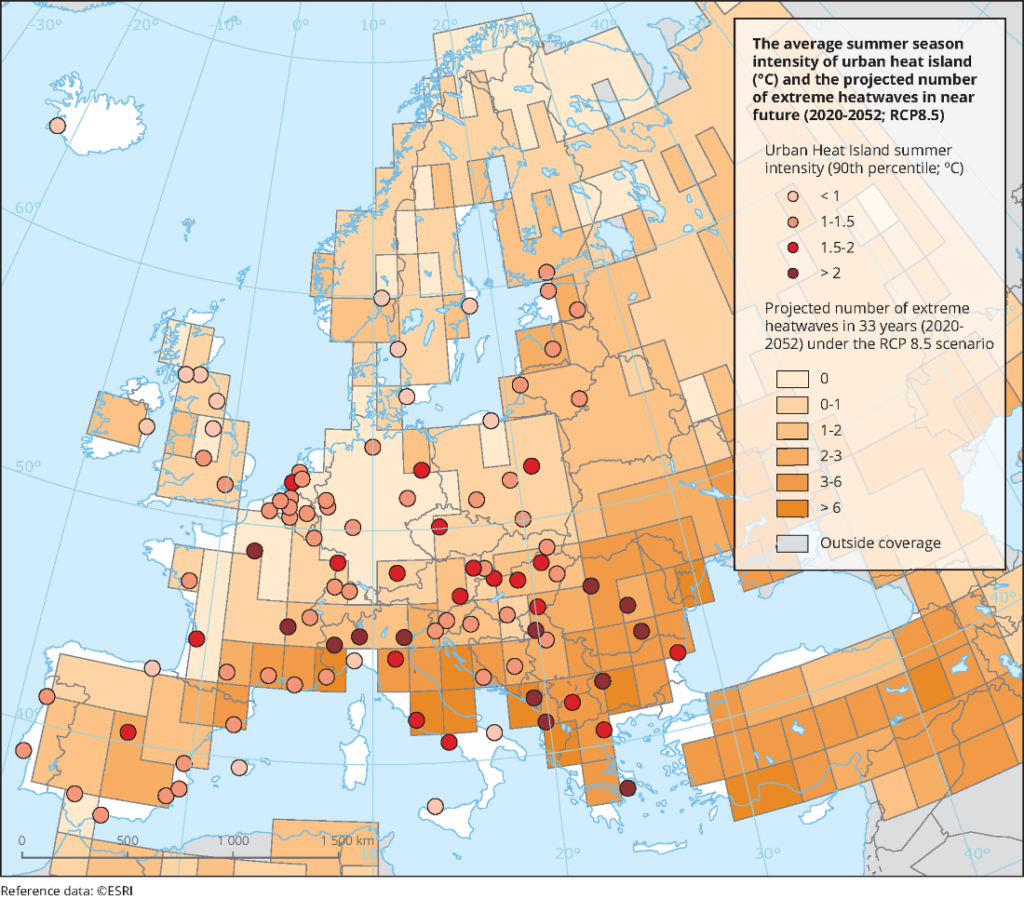Heatwaves: 5 tips to stay cool this summer
Europe’s heatwaves are increasing in frequency and intensity. With the summer of 2022 breaking temperature records across the continent and registering thousands of excess deaths as a result, implementing climate change mitigation strategies from the top down is more important than ever in protecting the EU’s most vulnerable population groups. But while global temperatures continue to climb, getting informed about the causes, effects and risks of heatwaves can help us learn strategies to cope as individuals and as communities.
In Europe, a heatwave is a period of at least three consecutive days with maximum temperatures above a certain threshold. The threshold temperature varies by country but is typically around 30°C or higher.
How should we cope?
When a heatwave hits, here are our top tips for how to cope:
1. Stay hydrated: Drink plenty of water and avoid sugary and alcoholic drinks, which can have dehydrative effects. Always carry a water bottle and drink regularly, even without feeling thirsty – a lack of thirst despite a hot and dry environment can be a symptom of heat-related illness.
2. Stay cool: Wear light-colored and loose-fitting clothes and stay in shaded or air-conditioned areas during the hottest parts of the day. Take cool showers or baths, employ space cooling technologies, and avoid strenuous activities during the hottest parts of the day.
3. Check on vulnerable individuals: Check on neighbors and relatives who are at high risk of developing health complications due to the heat to make sure they are staying cool and hydrated. Offer to help them if they need assistance with staying cool.
4. Reduce your energy usage: During a heatwave, energy usage can increase dramatically. To help reduce strain on the electrical grid and prevent blackouts, try to reduce your energy usage by, for example, turning off non-essential appliances and using energy-efficient light bulbs. These measures will also reduce the heat that such appliances produce as a byproduct, helping to keep indoor temperatures down too.
5. Get green: Surround your environment with as many plants and trees as you can. Green cover, especially in the form of green walls or roofs, can help with the heat enough to reduce our need for air conditioning by 40-60%!
Following these tips can help you to stay safe and comfortable during a heatwave. But what causes Europe to experience extreme heat events in the first place?
The science behind Europe’s heatwaves
On a global scale, Europe’s climate is particularly vulnerable to heatwaves. This is down to several factors.
The unique geography in Europe, and especially around the Mediterranean basin, plays a crucial role in producing extreme weather conditions. The transition zone between the mild, wet midlatitudes and the dry subtropics results in high temperatures that quickly evaporate precipitation.
Temperatures across Europe are rising at twice the global average rate; faster than any other continent.
Source: Copernicus
The effects of climate change mean that there is a trend of lower precipitation across Europe in winter and springtime, which leads to dry soils and a lack of surface water into the summer. Lower precipitation reduces the capacity for evaporation, allowing more energy from the sun to increase air temperatures instead of evaporating water from the ground. This, according to a range of studies, is one of the key components increasing the likelihood of heatwaves and droughts across the continent.
Another important contributing factor is Europe’s increasing urbanisation. With over 70% of European citizens living in urban and suburban environments, the urban heat island effect is exacerbating our experience of heatwaves. Urban areas, with their high concentration of buildings, paved surfaces, and limited vegetation, absorb and retain more heat from the air, leading to further increased temperatures.

As climate change mitigation efforts can never hit rewind on the trend of extreme heat events in Europe, it’s essential that we learn to adapt our habits and environments. That’s exactly why we’ve created the CoolLiving campaign – take a look and learn more about the dos and don’ts of summer comfort and sustainability!

